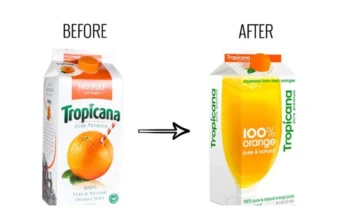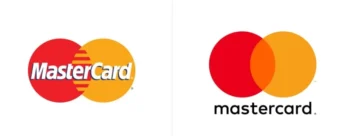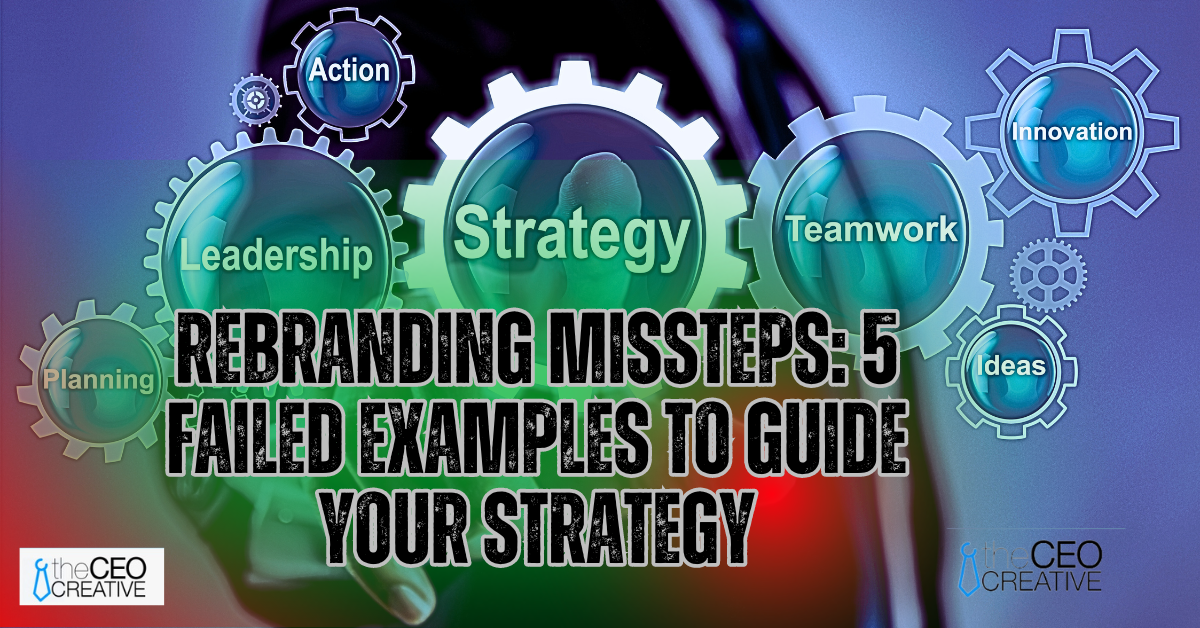Rebranding, no doubt, is a big deal. It’s not just about swapping logos or changing your color scheme – it’s about reinventing the essence of your company, and altering public perception while staying true to your mission let’s delve into the rebranding missteps we need to avoid.
The ultimate goal is to fortify your market presence, better speak to your audience, and boost your bottom line in the long run.
The purpose of rebranding
The motivation behind rebranding can vary as much as the businesses themselves. Here are a couple of common reasons:
- Keeping up with market trends or shifts: Evolve or become redundant. In a rapidly changing market, rebranding might be the boost you need to stay relevant.
- Refreshing stale brand image: Perception matters. A brand that appears outdated might struggle to connect with newer generations of consumers.
The inherent risks involved
Rebranding is a high-stakes gamble; the pitfalls are just as significant as the rewards. Misinterpreting your target audience, losing brand recognition, or simply failing to communicate the change effectively can lead to significant damage. As we explore these five branding failures, remember that every mistake is a potential learning opportunity.
Examination of Five Noteworthy Rebranding Failures
Case Study 1: Overview and Analysis – Radio Shack’s Total Tech Makeover

Remember Radio Shack? Yeah, me neither. After being a mainstay in the electronics market for decades, Radio Shack attempted to rebrand itself into “The Shack” in 2009 to appeal to the new tech-savvy generation. This move was heavily criticized because it stripped away the brand’s long-established identity.
It felt completely out of touch, and instead of attracting a new audience, it disoriented its existing customers. What we can learn from this? Simply put, don’t try to discard or alienate your brand’s history when rebranding.
Case Study 2: Overview and Analysis – Gap’s Logo Gap

We’re all familiar with Gap, a giant in the world of casual wear. Surprisingly, even giants stumble. Back in 2010, Gap decided to change its classic logo to something more ‘modern.’ The new logo was highly generic and lacked the brand’s original personality, causing a tsunami of backlash from fans and designers alike. They quickly reverted to their iconic blue box after just six days. Lesson learned? Understand your target audience’s affinity for your current identity before making drastic changes.
Case Study 3: Overview and Analysis – Tropicana’s Packaging Perplex

Tropicana, a renowned orange juice manufacturer, disastrously redesigned its packaging back in 2009. They replaced their easily recognizable image of an orange with a straw stuck in it with a bland, no-frills design.
Customers failed to identify their favorite brand on the store shelves, causing sales to plummet by 20% within a month. It provides an excellent lesson in the power of strong, recognizable branding elements.
Case Study 4: Overview and Analysis – Mastercard’s Pricy Punctuation

Mastercard decided to rebrand by adding a “Priceless” tagline, which unfortunately came with an unfortunate legal baggage. The company ended up defending its new slogan in court due to trademark conflicts.
This case highlights the necessity of thoroughly researching and validating any proposed new branding elements for potential legal implications before implementing them.
Case Study 5: Overview and Analysis – Kraft’s Velveeta Fiasco

In a bid to appeal to the health-conscious market, Velveeta, owned by Kraft Foods, dropped the words ‘cheese product’ from its packaging in 2002. This move led to confusion among consumers about what they were buying and significant drops in sales. The takeaway? When rebranding, make sure your product is still clearly communicated to your consumers – don’t sacrifice clarity for cleverness.
These examples of corporate rebranding failures should serve as eye-openers and guides in your next rebranding effort. Remember, being mindful of your brand’s history, audience love, product clarity, and legal implications can save you from an epic branding misfire.
Common Branding Missteps Identified in the Case Studies
Let’s delve deeper into the typical branding missteps identified in our five case studies of failed rebranding.
Underestimating the attachment of customers to the original brand
The first lesson our case studies drive home is never to underestimate the strong bond customers may have formed with the original brand. This attachment isn’t just about the logo or name; it’s a relationship formed based on trust, quality and the experiences they’ve had with the brand. Examples of this are starkly evident in the failed rebrands of Gap and Tropicana, where customers revolted against the brand’s departure from its iconic logo and packaging respectively.
Failing to properly research or understand the target market
Another major branding blunder stems from not thoroughly understanding the target market. A rebranding effort must be rooted in deep knowledge of who your customers are, and what resonates with them.
A classic example: in an attempt to tap into the younger market, RadioShack rebranded to “The Shack”. This failed as the new identity couldn’t connect with the desired demographic, proving just how important proper market research is.
Not effectively communicating the rebranding strategy or rationale
A lack of effective communication about the rebranding strategy or its rationale can also trip a business up. When MasterCard attempted to simplify its logo by dropping the word ‘MasterCard’, it created confusion. Customers were left puzzled, indicating the importance of clear communication during a rebrand.
Being inconsistent or unclear about the new brand identity
The last misstep we can point out is being inconsistent or unclear about the new brand identity. Consistency is key to reinforcing your brand in the minds of consumers. Take the case of Windows 8, which failed to clearly differentiate its new brand identity, leading to considerable pushback and a swift return to the familiar ‘Windows’ name.
Taking these common missteps into account ahead of time can save you from a failed rebranding effort that could cost your company dear. Remember, an ounce of prevention is worth a pound of cure, especially when it comes to rebranding.
Key Lessons from Failed Rebranding Attempts
To better understand why these branding efforts fell short and what we can learn from them, let’s delve into some key takeaways from these scenarios.
The value of public understanding
First, if you don’t fully understand your audience, you won’t succeed in rebranding. Remember when Pizza Hut tried to rebrand by changing their name to “The Hut” and acting “cool”? People weren’t really looking for a delicious experience at a fast-food pizza restaurant, so the business failed. This accident showed the importance of understanding your market and meeting their expectations.
The Consequences of Breaking Trust with Loyal Customers
Failing to consider the sentiments of your loyal customer base can prove to be a costly mistake. Remember Tropicana’s ill-fated rebranding attempt? They ditched their recognizable packaging for a new, generic look – leading to a 20% drop in sales. Lesson learned? Never underestimate the emotional connection between your brand and your customers.
The Value of Consistency and Clarity in Branding
Consider the case of Gap when they decided to ditch their iconic logo for a new, modern one overnight. The sudden change without any explanation or backstory baffled customers and brand enthusiasts alike, reflecting the relevance of maintaining consistency and ensuring clarity in your branding narrative.
The Necessity of Comprehensive Research and Preparation in Rebranding
Last but not least, comprehensive research and intense preparation are crucial before executing a brand overhaul. When RadioShack aimed to heal its struggling business by rebranding as “The Shack”, they didn’t realize how fond people still were of the original name and what it represented. Unsurprisingly, the rebrand failed, proving the necessity of doing your homework before making drastic brand changes.
How to Prevent Rebranding Failures in Your Own Business Strategy
Rebranding ain’t no walk in the park, folks. Let’s now sink our teeth into some strategic and practical approaches to prevent your business from stumbling into the pitfall of a failed rebranding campaign.
Ensuring that your rebranding motives are sound and beneficial
Start by understanding your motivations. Are you rebranding simply for a fresh look, or to communicate a real change in your business direction? It’s crucial to ask yourself this question early in the process “What are the rebranding missteps?.
A solid reason for rebranding could be new products, a change in target audience, or revitalizing a stale image. Keeping the core motive clear and beneficial will secure your rebranding efforts on a strong foundation.
Involving stakeholders in your branding strategy
It can turn disastrous if you overlook getting the input from the key stakeholders – and yeah, that includes your customers. If they liked your old brand, it’s better to keep them in the loop rather than surprise them with a completely new identity. Stakeholders can also provide insightful feedback that can prove to be instrumental in ensuring the success of the rebranding strategy.
Maintaining a clear, consistent brand identity
Jeez Louise, consistency is key to successful rebranding. Once you’ve decided on a new brand identity, stick with it. Don’t intermittently switch between your old and new designs, logos, or taglines. That’s just too confusing and can weaken your brand image.
Constantly reviewing and refining your brand strategy to meet changing needs
Lastly, know that rebranding isn’t a one-and-done kind of thing. It’s an ongoing process. The business world moves at a wicked-fast pace these days, and your brand needs to keep up by adapting to the evolving market trends and consumer preferences. Always be ready to revise and refine your brand strategy to meet changing needs. Mistakes are part of the game; what matters is learning from them and constantly tweaking your strategy to stay in the race.
Conclusion
The Importance of Learning From Rebranding Failures
By examining these instances of failed rebranding, we get a clear picture of how not to approach this strategic business maneuver. You see, each failure:
- Reveals the importance of understanding your target demographic
- Highlights the need for clarity and simplicity in branding
- Shows that staying true to your brand’s core values and mission is key
- Demonstrates how crucial it is to get buy-in from customers and stakeholders before the rebrand
The Role of Strategic and Well-planned Rebranding in Business Success
Rebranding, when done correctly, can revitalize a business, giving it a fresh lease of life in a rapidly evolving market. A successful rebrand infuses relevance, momentum, and energy into a company’s identity, driving engagement, loyalty, and growth.
But to achieve this success, it has to be an intensive, strategic process involving robust planning, market research, and genuinely understanding your audience. Make the right moves to ensure that your next rebrand doesn’t end up as another tale of branding missteps.







